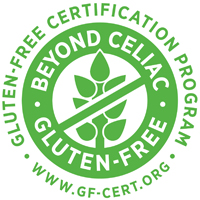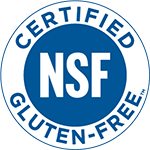Food Safety Tips: U.S. Gluten Awareness and Labeling
- celiacbythebay

- Nov 1, 2023
- 3 min read
Updated: Mar 14
Gluten labeling and awareness has a long way to go in the U.S. Here are some gluten safety tips for your trip.
Note: Our posts may contain affiliate links. For example, as an Amazon Associate, we earn from qualifying purchases. If you purchase something through those links, you won't be charged extra, but we'll receive a small commission. All opinions expressed herein are our own, and we will only recommend products, services, and restaurants that we have personally tested and found to meet our quality standards.
Grocery Shopping Tips: Food Labeling
While wheat is required to be clearly labeled on all food ingredient labels (i.e. via a “contains” or allergen statement, or by spelling out sources of wheat in the ingredient list itself), other gluten-containing grains are not recognized as allergens in the U.S. and thus don’t face the same regulatory requirements as wheat. In practice, this means that manufacturers are not required to label ingredients derived from barley or rye, making it much trickier to confirm whether or not an ingredient -- such as natural flavors, a very common ingredient here that is typically either corn- or gluten-derived -- is gluten-free. This also includes medications!
Therefore, it’s important to read ingredient labels extra carefully to protect yourself from getting sick. You can see a list of ingredients to keep an eye out for here. In particular, keep a careful eye out for the following sources of “hidden” gluten and avoid eating the item unless the product is specifically labeled (and ideally, certified) gluten-free: natural flavors, yeast, unspecified starch, smoke, and vinegar that’s not distilled.
Lindt Lindor Milk Chocolate Truffle Sample
Here’s an example of a U.S. Lindt LINDOR milk chocolate truffle. Read more about our LINDOR truffle test here (there's some safe gluten-free replacements in that post as well!). See "barley malt powder" and notice that there is no bolding or inclusion in a "contains" statement.
Restaurant Safety Tips: Advocating For Your Needs
In addition to the U.S.’s weak food labeling laws, people in the U.S. tend to have a low awareness of celiac and other diseases that have to be strict with cross contact in their avoidance of gluten. Do not expect the average grocery or restaurant employee to be aware of allergy-safe food prep and handling, or in many cases, even what gluten is. It’s unfortunately extremely common for people here to confuse it with a dairy allergy or lactose intolerance, interestingly enough.
We highly recommend thoroughly researching each restaurant’s celiac awareness and cross-contact prevention precautions before eating anywhere. This includes pre-visit research through this website and/or an app like Find Me Gluten Free (get $5 off FMGF Premium here), to asking the right questions of servers and considering using an allergy card like those from EqualEats (get 10% off with coupon code CELIACBYTHEBAY) to ensure you’re safe. And if at any time within these steps you don’t trust they have the knowledge to keep you safe, don’t be afraid to leave and find somewhere else to eat. Trust your (sensitive) gut -- better to be safe than risk ruining your trip and your health!
Looking for our full gluten-free guides to cities across the U.S.? Click here.










Komentáre